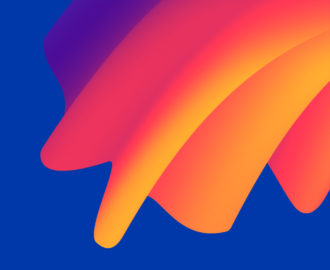We recently Zoomed with Gavi Wolf, founder and CEO of Indiewalls, a B2B startup in NYC that connects a global community of independent artists with customers in commercial real estate and hospitality (hotels, restaurants, cruise lines, etc). As their customers’ businesses screeched to a halt at the beginning of the pandemic, Indiewalls was forced to reimagine their business and rose to the occasion with grit and creativity. Their team generated three new revenue streams, created unique ways of engaging their audience, and built initiatives to give back to their community.
In our conversation, Gavi shared his advice for other founders looking to adapt to our new reality, and shared his thoughts on leading a team in an unpredictable era. Check out highlights from our conversation in the video above. Here are some of our favorite takeaways for B2B founders:
How can you use your expertise to uncover new opportunities?
At the beginning of 2020, 60-70% of Indiewalls’ commercial art contracts were from hotels. When the hospitality industry went into a freefall in March, Indiewalls’ revenue “dropped off a cliff.” Instead of waiting for hotel contracts to pick back up, Indiewalls looked to their strengths—a large community of artists, expert curators, and the ability to easily fabricate printed materials—and saw an opportunity to respond to the needs of the current moment. Within weeks, they launched Indiesigns, creative signage that helps businesses promote pandemic protocols, like mask-wearing and social distancing. As Gavi said, “Just like a lot of manufacturing businesses easily pivoted into making medical supplies, we figured that we design and print things all the time. We could definitely do creative signage.” And customers loved the idea in return: “They liked the idea that signage didn’t have to be scary, it could be unique and branded and fun.” Indiesigns is now a growing venture that drives revenue, and Gavi plans to continue it, even after the pandemic is over.

Indiesigns: Creative signage designed by independent artists
Get the whole team involved
When business first slowed down, Gavi and his co-founder Ari Grazi brought their entire team together. As Gavi put it, “We did a big, blue sky brainstorming session with everyone — not just senior management. We broke the team up into groups to think of ideas: what does our expertise allow us to do right now? How can we give back to our community while creating new lines of revenue?” Indiesigns, as well as three other new successful initiatives, were born out of this session. Including the whole team allowed different ideas and perspectives to bounce off each other, and let more creative ideas come to the surface. This open session also created an environment of trust and transparency for the team in a moment of uncertainty.
One of the new initiatives created by the Indiewalls team was Give a Sign: a program to install banners in front of hospitals to thank essential workers. Indiewalls artists designed the banners, and then donors funded the fabrication and installation. Give a Sign became a way of leveraging Indiewalls’ artist community, while allowing customers, mostly commercial real estate developers and hotels, to give back amidst the pandemic.

Give a Sign: Indiewalls’ initiative to give thanks with art
Collaborate on content as a way to connect with your most valuable connections
“Between Two Screens is valuable even if nobody watches because it gives us the opportunity to speak to some of our most important customers.”
Another one of Indiewalls’ new initiatives is Between Two Screens, a video series in which Indiewalls President Ari Grazi interviews artists, designers, and leaders in the design community. “It’s been a way to find out what our community has been up to and how this moment is affecting them, which has been awesome for us,” as Gavi put it. Even though they’ve received positive feedback from viewers, Gavi points out that “Between Two Screens is valuable even if nobody watches because it gives us the opportunity to speak to some of our most important customers. It shows how, for B2B content, you don’t need something to go viral. If it’s nourishing an important relationship, then it’s worth doing. For us and many B2B companies, individual customers are worth so much, so the content is worth it, even if it only engages one valuable customer.”
Between Two Screens: Indiewalls’ new video series
Moving fast is more important than ever
“I thought, if everybody’s moving slowly, let’s move faster. I didn’t want to be the company that walks out of this situation saying why did we miss this opportunity?”
Early in the slowdown, Indiewalls decided that any new initiatives would have to be pushed out within one to three weeks. “Back in March, we started talking to clients and realized that many of them were thinking of this as a moment to slow down,” Gavi said, “I thought, if everybody’s moving slowly, let’s move faster. I didn’t want to be the company that walks out of this situation saying why did we miss this opportunity? What weren’t we thinking? What weren’t we looking at?” This speed helped Indiewalls start to see the impact of their new initiatives quickly and then refine their products to best match their customers’ needs. As Gavi mentioned, “VC Paul Graham has a great essay about the importance of launching early, and then improving from there. To paraphrase, he said, the ones that launch quickly are always the ones that win.”
Leave your ego behind, and be open to changing your mind
“I had been the most ardent naysayer of remote work. I didn’t believe we could be productive that way. But I’ve definitely eaten my words.”
For Gavi and Indiewalls, it’s been crucial to get very comfortable with “changing anything and everything quickly, and being open to new ideas.” In our conversation, Gavi reflected on his own moments of staying open-minded about change: “Our team was pretty surprised at how quickly I said we’re breaking our lease. We don’t have an office anymore. I had been the most ardent naysayer of remote work. I didn’t believe we could be productive that way. But I’ve definitely eaten my words. I don’t see that as true anymore. And it’s exciting to see our team have more flexibility. Whatever you’ve been doing, however long you’ve been doing it for, it doesn’t matter. We’ve been doing this for almost 10 years. I’m still very happy to make big changes.”
Full Transcript | Interview with Gavi Wolf, CEO and co-founder of Indiewalls
Tell us about Indiewalls. What is the company’s mission, and who are some of your clients?
Indiewalls is a commercial art consultancy. We help commercial entities like Google, Hilton, and Starbucks source their artwork. We help them find everything from one-of-a-kind, hand-painted murals to the prints you see in guestrooms of a hotel.
As a company, what we’ve focused on doing differently is sourcing work from independent artists. We have a network of 2000+ independent artists around the world. Our clients can look online for artwork, or we can help curate a collection for them. We oversee everything from concepting and design to production and installation to insurance and contracting. We do production in our own fabrication facility called Indieworks in Brooklyn.
You mentioned retail and hospitality clients like Hilton and Starbucks. Obviously, those industries have been drastically impacted by the coronavirus pandemic. How has your business changed in the past few months?
Probably about 60-70% of our business comes from hotels and cruise lines. In March, a lot of our projects stopped or slowed to a snail’s pace. Then, no new projects came in for a good two-and-a-half months. From a revenue perspective, things really dropped off a cliff. We’ve had to come up with new business plans and strategies very quickly.
Tell us about those new strategies. We’ve been impressed by how many new creative initiatives Indiewalls has launched in recent months.
When things started slowing down, we knew that we didn’t want to sit around and wait for things to pick back up. So we had the team get together, and we did a big, blue sky brainstorming session with everyone — not just senior management. We broke the team up into groups to think of ideas: what does our expertise allow us to do right now? How can we give back to our community while creating new lines of revenue?
There were four different ideas that gained traction: one of them is called Give a Sign, which is an opportunity for us to partner with artists and donors to put up large banners in front of hospitals to thank essential workers for what they’re doing. Our artists design the banners, and then donors fund the fabrication and installation. This was a way of leveraging our artist community, while allowing our customers, mostly commercial real estate developers and hotels in this case, to give back. We now have almost 10 banners up around the city, and we were even featured on the front page of the New York Times website.
The next initiative is called IndieSigns, which came from the need to find alternative ways to drive revenue. People are not ordering artwork like they were before, but there’s a new demand for signage to explain social distancing, mask-wearing, etc. Just like a lot of manufacturing businesses easily pivoted into making medical supplies, we figured that we design and print things all the time. We could definitely do creative signage. Artists from our community designed a range of colorful, creative signs, and we put a Shopify site together. The customers that ended up being interested were hotels. They loved the idea that signage didn’t have to be scary, it could be unique and branded and fun.
The next initiative is Between Two Screens — a video series hosted by my business partner Ari Grazi. He interviews members of our community, including artists, designers, and leaders of design firms. It’s been a way to find out what our community has been up to and how this moment is affecting them, which has been awesome for us.
Finally, something we’re just launching now is called Live Curating. We figured people are still at home, and they’re getting much more comfortable with Zoom’s sessions. And so why not give them the opportunity to work with our curators to choose art for their home? People fill out a short form, and then our curators give a 30-min session going through your home and talking about what you like. We then send a proposal for artwork that we think is a good fit. We’ve been trying to keep this affordable, between $100-500 per piece.
Let’s zoom out and talk about the inception of these initiatives. What were some of the things that inspired you to adapt in the way that you did?
Back in March, we started talking to clients and other people in our industry and realized that many of them were thinking of this as a moment to slow down. Many companies were receiving PPP (the forgivable loan offered to small businesses in the US) to keep paying their employees, but otherwise were treating this like an extended vacation. I thought, if everybody’s moving slowly, let’s move faster. I didn’t want to be the company that walks out of this situation saying why did we miss this opportunity? What weren’t we thinking? What weren’t we looking at? And so that’s how we decided to have a big brainstorm with the whole team.
We decided that anything we do has to be pushed out in one to three weeks. This was a really helpful mindset for us. Any initiative that we’re doing has to be pushed out really rapidly because we’re not just taking a break during this time. Staying creative, open-minded, and with a focus on speed were the most helpful things for us.
I’ve been particularly impressed with the speed of your initiatives. Business started slowing down in March, and both IndieSigns and Give a Sign were launched by early April.
The VC Paul Graham has a great essay about the importance of launching early, and then improving from there. To paraphrase, he said, the ones that launch quickly are always the ones that win. I think you learn so much when you just put something out there and then let the idea evolve. For Indiesigns, we were sure supermarkets would be interested, and we designed signs just for them. But then we didn’t sell to any supermarkets. When we tried selling to hotels, hotels were like, yeah, we really need this. We changed the signage and the website for them. And we would have never known that if we had taken three months to get it live.
Let’s talk about rallying your team. How were you able to inspire your team through all of these changes? Have you thought about management during this time?
I think one of the lucky things that we have is a really strong, very committed team. I always appreciated that, but now I appreciate it more. We were starting with people who said, from the beginning, how can we help? How can we get involved? What can we do?
As things started to slow down, we really focused on the core team. We got rid of all ancillary expenses right away and that included things like our office. We actually broke our lease and got out of the office. We have a production facility in Brooklyn, and we moved a lot of our stuff there, which is much less expensive. We decided the team’s going to work from home indefinitely.
We also focused on the core team over contract work. We felt that we’d rather keep the people who were internal and able to do the most and, you know, we were the most committed to. I think people really appreciated that.
We’ve always been big on transparency and that didn’t stop now. We’ve always shared our revenue with the team regularly. And we continue to do that now, at a little bit of a faster clip. There were definitely nerve-wracking times and times where we said we didn’t know what was going to happen. But we’re on a bit more solid footing now. I think the transparency, the open-mindedness, and the great team we started with helped us get there.
Thanks for sharing that. Now let’s talk about marketing. I’ve been impressed by how Indiewalls hasn’t slowed down the cadence of marketing recently, even though you don’t currently have a full-time marketing team. How have you thought about marketing during this time?
We definitely had to rethink marketing to some extent. We brought it in-house, and we’ve focused on whatever we can do for free. But we’re still trying to do things that draw attention and utilize the skills on our team. We’re also focused on ways we can collaborate with others.
Like with “Between Two Screens” — we’re bringing in other people from our industry and leveraging those partnerships. Something we’ve learned from Blue Seedling, too, is the importance of email. We’ve focused on using email to spread the word about our new initiatives and get people involved.
Can you talk about the feedback you’ve received about any of these activities?
Anecdotally, we’ve received a lot of positive feedback about Between Two Screens. We’ve had customers who generally wouldn’t be calling us directly—like the owner of a 100 person design firm—asking to be interviewed. It just goes to show that people think it’s meaningful.
On that note as well, Between Two Screens is valuable to us even if nobody watches it because it gives us the opportunity to speak to some of our most important customers. It shows how, for B2B content, you don’t need something to go viral. If it’s nourishing an important relationship, then it’s worth doing. For us and many B2B companies, individual customers are worth so much, so the content is worth it, even if it only engages one valuable customer.
That’s a great point. On the topic of Between Two Screens, what made you want to take on video for the first time at a moment like this? What is the actual process of making the videos?
Well, it came from my co-founder Ari — he’s engaging and interviewing comes easily to him. But making the videos went pretty terribly at first. We’d tried to do it ourselves, and the editing went really poorly and it took so much time. So we ended up hiring someone to edit. I’m a huge fan of Upwork and Fiverr. We found someone to edit the videos who is really talented and affordable. We’re still learning as we go along. But for us, it’s important to get them out there quickly and see what happens. Making the videos is also just fun, that’s a big part of it.
Tell me what the next couple months are going to look like for Indiewalls.
That’s a good question. It’s still very unknown. Indiesigns has given us a lot of confidence to say, OK, now we’re in the signage business, in addition to art.
We really don’t want to “go back to normal.” We want things to be different going forward. I really like the remote working thing. I was the most ardent naysayer of remote work. I didn’t believe we could be productive. But I’ve definitely eaten my words. I don’t see that as true anymore. And it’s exciting to see our team have more flexibility.
We’ve thought differently about how we interact with our customers. We want to offer a higher level of service, but more commitment upfront from them. We’re adjusting who we are as a company, and we want to continue with this evolution.
Before we leave, what would you say to a founder who is having trouble adapting to this moment and looking for creative ways to move forward?
For me, what has really worked is being very comfortable with changing anything and everything quickly, and being open to new ideas. There’s a lot of fear of change in general. Our team was pretty surprised at how quickly I was like, we’re breaking our lease. We don’t have an office anymore. Whatever you’ve been doing, however long you’ve been doing it for, it doesn’t matter. We’ve been doing this for almost 10 years. I’m still very happy to make big changes.








